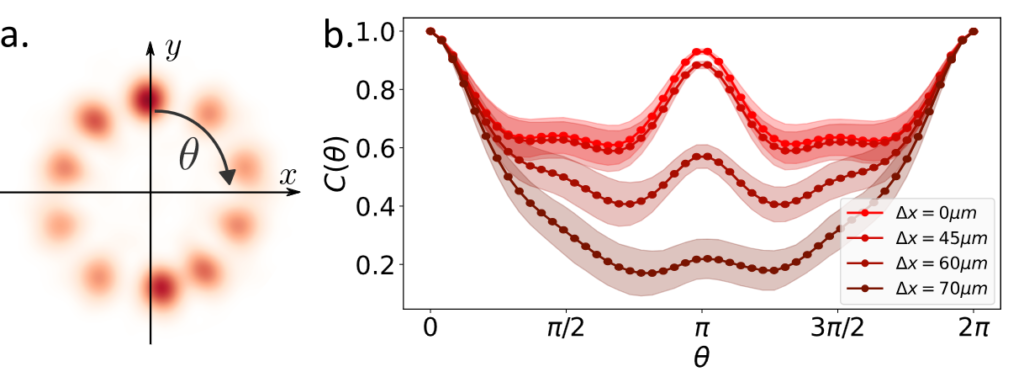Characterization and Exploitation of the Rotational Memory Effect in Multimode Fibers
Characterization and Exploitation of the Rotational Memory Effect in Multimode Fibers
Rodrigo Gutiérrez-Cuevas, Arthur Goetschy, Yaron Bromberg, Guy Pelc, Esben Ravn Andresen, Laurent Bigot, Yves Quiquempois, Maroun Bsaibes, Pierre Sillard, Marianne Bigot, Ori Katz, Julien de Rosny, Sébastien M. Popoff
Physical Review X – to be published (2024)
arXiv:2310.19337
In an ideal perfectly straight multimode fiber with a circular-core, the symmetry ensures that rotating the input wavefront leads to a corresponding rotation of the output wavefront. This invariant property, known as the rotational memory effect (RME), remains independent of the typically unknown output profile. The RME thus offers significant potential for imaging and telecommunication applications. However, in real-life fibers, this effect is degraded by intrinsic imperfections and external perturbations, and is challenging to observe because of its acute sensitivity to misalignments and aberrations in the optical setup. Thanks to processing involving a spatial light modulator, we efficiently overcome these measurement biases, allowing for precise quantification of the RME. We establish an experimental and theoretical framework for studying and manipulating the RME in multimode fibers. Theoretical predictions are consistent with experimental data and simulations, connecting the shape of the angular-dependent correlation of the RME to the geometrical properties of the core deformation. This work opens the road for accurate characterization of the distributed disorder originating from the fabrication process and calibration-less imaging in multimode fibers.

